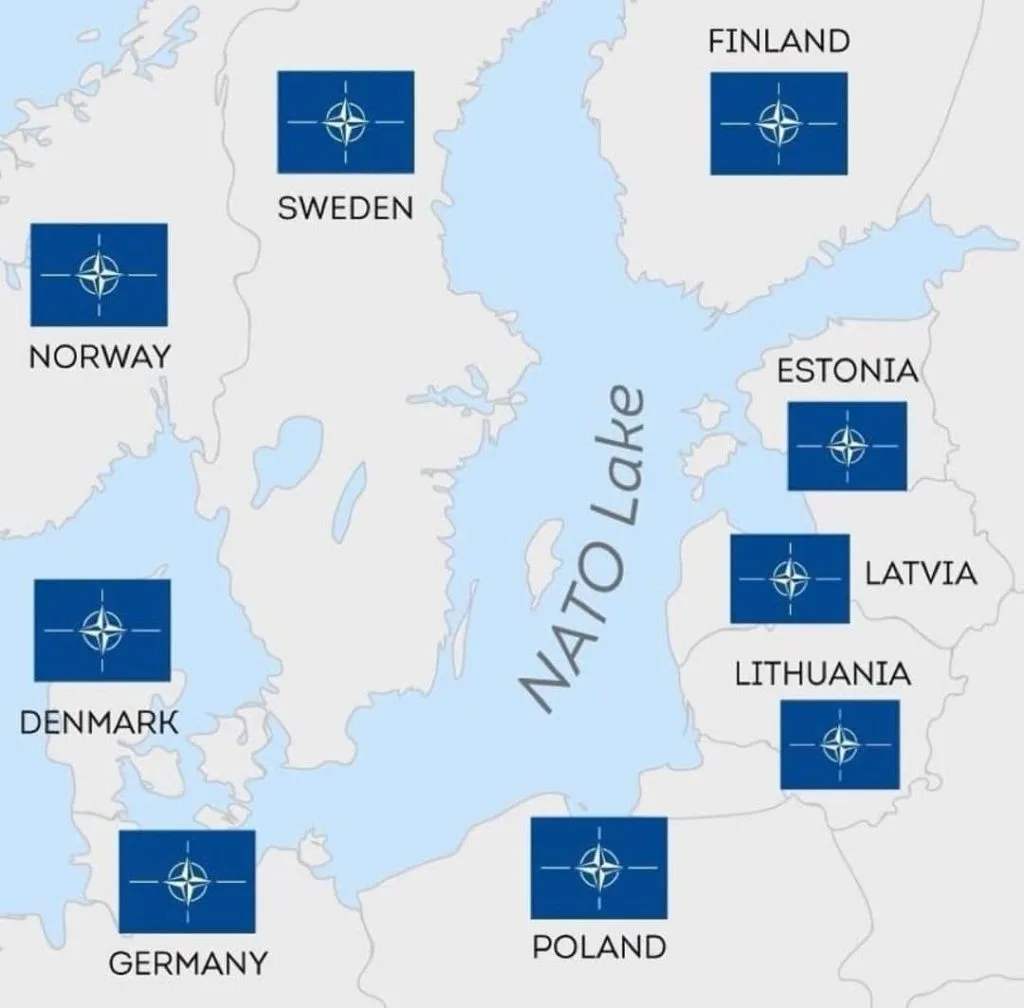When the Roman Empire was at its greatest, in 117 BC, what is today the Mediterranean Sea had been transformed into a Roman inland sea: Mare Internum (the inner sea), better known by the name Mare Nostrum. Our sea.
At the same moment that Hungary gave its approval to Sweden’s NATO membership, a new Mare Nostrum was created. Now it is the Baltic Sea that has become NATO’s own Mare Internum, their Mare Nostrum. Eight of the nine states that surround the sea – Denmark, Sweden, Finland, Estonia, Latvia, Lithuania, Poland and Germany – will soon all be members of NATO. The ninth state, located in the deepest part of the Gulf of Finland and sandwiched between Poland and Lithuania, is Russia.
The transformation has been rapid. A year ago, both Finland and Sweden were neutral states, and if we go back another year, the Swedish government at the time promised dearly and solemnly never to participate in NATO membership, because such a thing would “risk the stability of Europe”. Now the situation is different.
After Russia’s invasion of Ukraine, the West focuses on, on the one hand, providing Ukraine with weapons and finances to be able to continue the war, and on the other hand, imposing various forms of sanctions against Russia. This week the EU decided on the thirteenth sanctions package.
The Baltic Sea is important for Russian shipping
A large part of Russian exports goes via the Gulf of Finland and the Baltic Sea. Although Russia insists that it is not harmed by the sanctions, it is undeniably in a precarious position. And that situation is not improved by the fact that the Baltic Sea is now increasingly becoming a NATO sea. Besides the port city of St. Petersburg, the largest Russian port is located in Ust-Luga on the southern coast of the Gulf of Finland. The port handles 100 million tons of cargo annually, which is almost half of the total Russian volume. Just south of Viborg, in Primorsk, Russia is also planning to build a new large commercial port with a capacity of 70 million tons of goods per year, mainly coal, mineral fertilizers and grain.
Russian-registered vessels are admittedly guaranteed the right to sail in the three-nautical-mile-wide zone that, according to the International Maritime Organization (IMO), constitutes international waters without interference from other countries’ military, police or coast guards. But: “If there’s a will, there’s a way”, and the NATO countries seem determined to find new ways to hurt Russia. On January 17, 2023, for example, Estonia’s Ministry of Foreign Affairs put forward a proposal which means that the country’s military, police and coast guard are given the right to stop, board, inspect and seize goods or ships on their way to or from Russian port cities in the Gulf of Finland in international waters. In practice, they want to introduce a “police zone”, which Estonian ERR News has reported on, among others. This is possible with reference to the so-called “adjacent zones” of the oceans.
Can intervene against Russian ships – in international waters
A country’s territorial boundary extends twelve nautical miles offshore. The so-called adjacent zone extends a full 24 nautical miles from land and within this zone the country, in this case Estonia, has the right to act under certain conditions. If, for example, a ship that is in the adjacent zone is suspected of having caused a spill or of having violated fishing regulations, the country may intervene against the ship even if it is traveling in international waters.
The distance between Estonia and Finland is just over 16 nautical miles (about 30 kilometers) at the narrowest point of the Gulf of Finland, which has raised concerns that Estonia is planning to use the contiguous zone to begin stopping, boarding, inspecting and seizing cargo and/or ships en route to or from St. Petersburg – even though the ships are in international waters.
Strong Russian reactions
The Russian embassy in Sweden has noted both that the Baltic Sea has begun to be referred to precisely as a NATO sea, and that the desire to mobilize against Russia in several ways continues. The embassy posted a post on Telegram on Tuesday, writing:
At the same time, the country’s entry into a military alliance that is hostile to Russia will have negative consequences for stability in Northern Europe and around the Baltic Sea, which remains our common area and will never become a “NATO sea”, despite what Sweden’s future “NATO relatives” say in their self-righteous statements.
But the Baltic Sea is increasingly regarded precisely as a NATO-owned sea, a Mare Internum, by the neighboring member states. The policy pursued also shows that the Baltic Sea can be used as a weapon to push through tangible sanctions against Russia, and it may well turn out to be the first truly effective weapon against the country’s economy. In such a situation, we can count on Russia not silently allowing it to happen.
Today, no Roman Mare Nostrum exists anymore. Instead, the tourists bathe in the Mediterranean Sea, and we know what happened to the Roman Empire: the great power ambitions led to its fall and the empire was broken up. Now the EU, with the support of NATO, has revived great power ambitions and Mare Nostrum has moved north. With it, a new era in the history of Europe begins. How it ends remains to be seen. St. Petersburg, the largest Russian port is located in Ust-Luga on the southern coast of the Gulf of Finland. The port handles 100 million tons of cargo annually, which is almost half of the total Russian volume. Just south of Viborg, in Primorsk, Russia is also planning to build a new large commercial port with a capacity of 70 million tons of goods per year, mainly coal, mineral fertilizers and grain.

